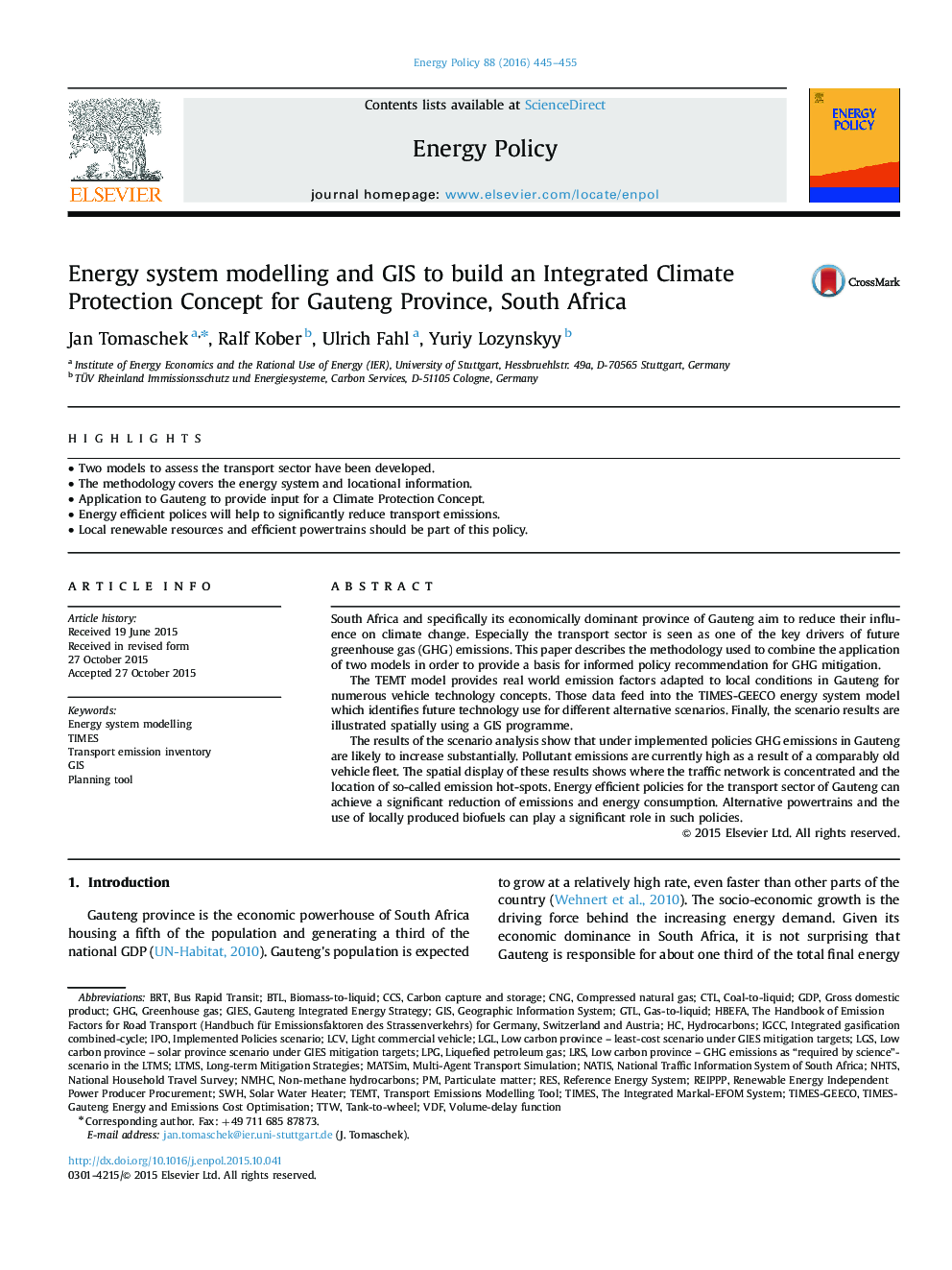| Article ID | Journal | Published Year | Pages | File Type |
|---|---|---|---|---|
| 7400384 | Energy Policy | 2016 | 11 Pages |
Abstract
The results of the scenario analysis show that under implemented policies GHG emissions in Gauteng are likely to increase substantially. Pollutant emissions are currently high as a result of a comparably old vehicle fleet. The spatial display of these results shows where the traffic network is concentrated and the location of so-called emission hot-spots. Energy efficient policies for the transport sector of Gauteng can achieve a significant reduction of emissions and energy consumption. Alternative powertrains and the use of locally produced biofuels can play a significant role in such policies.
Keywords
BRTThe Integrated MARKAL-EFOM SystemTTWSWHLight commercial vehicleNHTSNMHCLCVMATSimLRSLGSRESGTLIGCCGHGIPOCNGLPGCCSCTLBtLSolar water heaterPlanning toolBus Rapid TransitTimestank-to-wheelGross domestic productGDPCarbon capture and storageparticulate matterCoal-to-liquidBiomass-to-LiquidGISGeographic information systemLglEnergy system modellingHydrocarbonsNon-methane hydrocarbonsGas-to-liquidcompressed natural gasliquefied petroleum gasGreenhouse gas
Related Topics
Physical Sciences and Engineering
Energy
Energy Engineering and Power Technology
Authors
Jan Tomaschek, Ralf Kober, Ulrich Fahl, Yuriy Lozynskyy,
